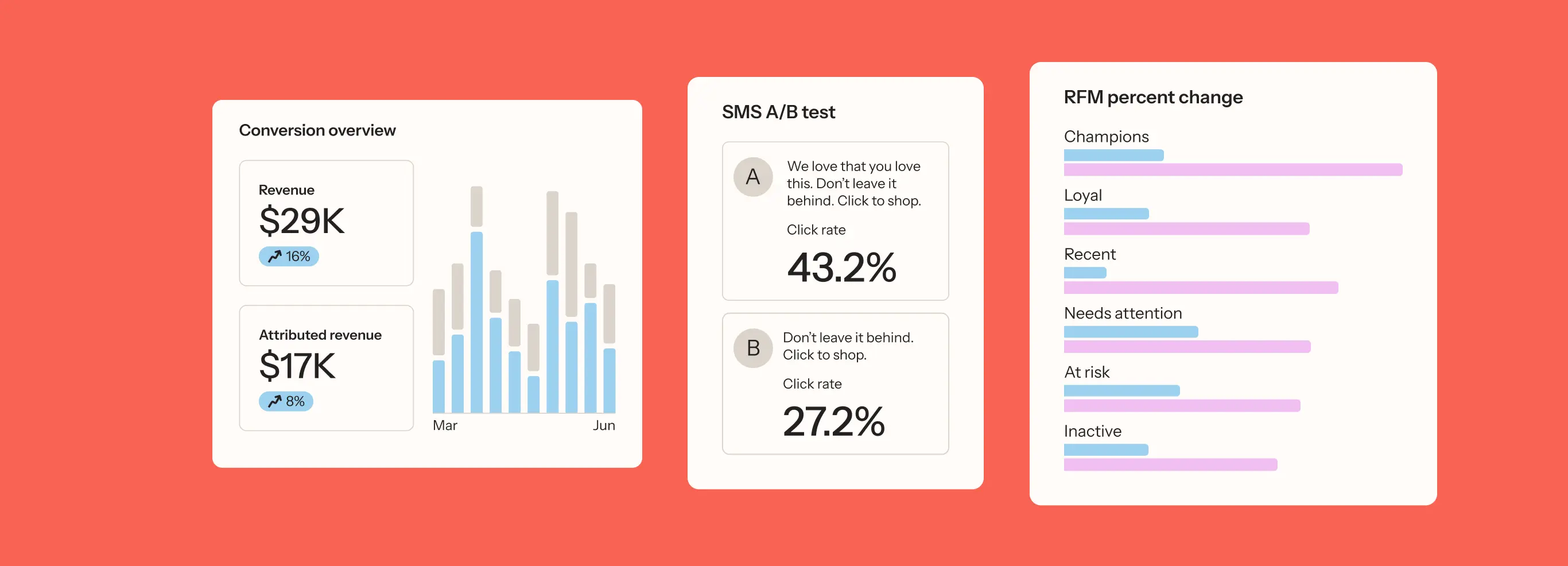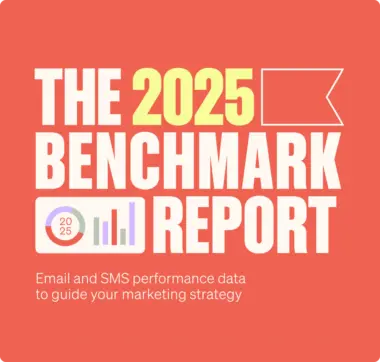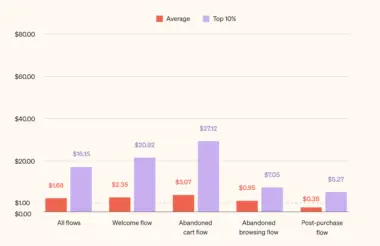2025 email marketing benchmarks by industry
Data is a marketer’s best friend—particularly performance data
Summary: what are email marketing benchmarks?
Email marketing benchmarks help you gauge how well your campaigns and automations are working in comparison to other brands like yours.
In these 2025 email marketing benchmarks, we share data based on over 167,000 Klaviyo customers to help ecommerce marketers from all industries, including fashion, beauty, health, and more.
Highlights from the email marketing benchmarks report
Dig into Klaviyo’s email marketing performance data to see where you stand on email open rates, click rates, conversion rates, and revenue per recipient in comparison to your industry’s average.
Dive deeper with key learnings
Check out these 3 takeaways from the full report—and download your copy to learn more.
These days, shoppers expect sales all year, not just on Black Friday. Year-round, brands often compete for consumer attention with clever discounts and limited-time offers. But spending extra time to find the campaign dates and messages that will most resonate with your audience, or segments of your audience, really matters.
Campaign order rates are more than 5x higher for the top 10% of campaigns across both email and SMS. RPR for the top 10% of campaigns is even higher at 7x the average.
Brands that want to excel beyond the status quo need to go beyond discounts to develop smarter digital relationships. Effectively using customer data for smarter segmentation and better personalization is key to standing out. (Keep an eye out—more tactical advice on this later in the report.)
Want on-going suggestions based on your performance?
Reach your goals faster by focusing on the metrics that need the most work. Klaviyo’s personalized benchmarks show how your performance compares to similar businesses, so you can see where you’re leading the pack—and where you might be falling short.
Email marketing metrics to track & optimize
Turn your email marketing channel into one of your biggest revenue drivers by tracking and optimizing these metrics.
What you need to know about email reporting
Access the fundamentals to email reporting to set you and your organization up for success.
Must-have email marketing tools & features
All the strategy and creativity in the world mean nothing if you can’t execute. Here are the tools you need.





